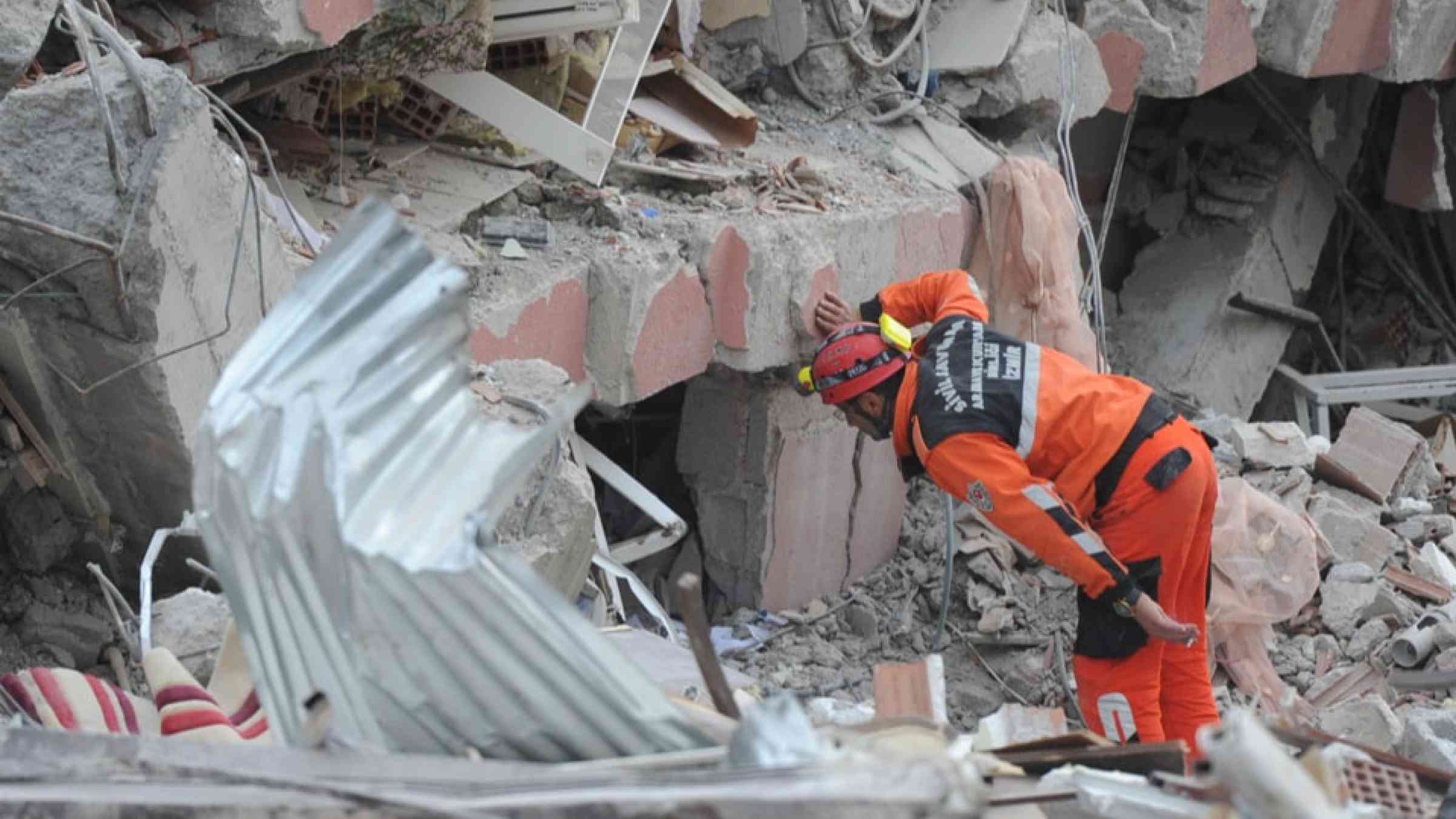A step toward understanding earthquakes in California

The San Andreas may be the most well-known fault in California, but no one alive today experienced its most recent significant earthquake that ruptured 116 years ago.
The Great San Francisco Earthquake struck at 5:12 a.m. local time on April 18, 1906. The magnitude 7.9 quake caused shaking that lasted up to 60 seconds and sent vibrations all the way to southern Oregon, Los Angeles, and central Nevada. The earthquake and subsequent fires killed an estimated 3,000 people and left half of the city’s 400,000 residents homeless.
Researchers study older significant earthquakes like this one to better understand how frequently they strike on a fault. Although no one can predict when an earthquake will occur, scientists can better assess seismic hazards by calculating the probability of a ground-rupturing earthquake occurring in a specific area within a certain number of years.
Considering the historical average rate of large earthquakes on some faults in California, including the San Andreas, the odds that there hasn’t been a major earthquake in the last 116 years are very low.
In a new publication, USGS geologist Devin McPhillips studied sites along three faults in California with long histories of earthquakes to better understand what’s happening. “The wait between earthquakes might be longer than we previously thought because the evidence for older earthquakes isn’t always 100% accurate,” McPhillips said. “If some of these older earthquakes are misidentified, then the long wait we are currently experiencing might be more typical.”
It's California's fault
The San Andreas Fault first captured the world’s attention on that fateful April day 116 years ago when it ruptured along the northernmost 296 miles (477 km) of the 800 mile- (1300 km) long fault that marks where the Pacific plate slides by the North American plate. The relative movement along the fault varied from 2 to 32 feet (0.5 m to 9.7 m), which means if two people were standing on opposite sides of the fault, in some places one would slide away from each other by up to 32 feet from the other. In southern California, the last rupture of the San Andreas Fault occurred in 1857.
Geologists find that the total accumulated displacement from earthquakes (sudden fault movement) and creep (steady fault movement) is at least 350 miles (560 km) along the San Andreas fault since it came into being about 15-20 million years ago.
In addition to the San Andreas Fault, McPhillips also studied two additional sites on the Hayward and San Jacinto faults.
The Hayward Fault’s most recent damaging earthquake was more than 150 years ago. USGS scientists have found evidence for 12 quakes on the southern Hayward Fault during the past 1,900 years. Notably, the last six quakes (from 1134 to 1868) occurred at intervals of 95 to 183 years, with an average interval of about 150 years.
Using past clues to understand future earthquakes
Whenever an earthquake happens, it leaves telltale signs that eventually get buried or imprinted into outcrops and other geologic formations. For instance, fault scarps (when a side of a fault has moved vertically with respect to the other), offset or folded layers of sediment and soil, and parts of the landscape that have been tilted, uplifted, or torn apart are all signs of an ancient earthquake.
For the most part, researchers only see evidence for earthquakes above magnitude 6, because smaller quakes don’t typically leave behind evidence. To expose what happened, researchers can dig trenches along a fault. Inside a trench, they can see when and how frequently an earthquake hit that spot.
They tally how many past earthquakes they see and determine the number of years separating each earthquake. Those numbers help them determine a recurrence interval, which is the average time between earthquakes at the same site along a fault.
McPhillips calculated recurrence intervals for sites on the San Andreas, Hayward, and San Jacinto faults. He also refined some calculations of recurrence intervals to consider whether past earthquakes were correctly interpreted as unique earthquakes.
“Some trench sites can have 10 or more records of past earthquakes and recurrence intervals are usually a little over 100 years,” McPhillips said. “But we aren’t 100% confident on what we’re inferring about past earthquakes.”
At the Thousand Palms paleoseismic site in Southern California, the 97.5% confidence interval changes from 455 years to 1431 years when event likelihoods are considered. Event likelihood is the probability that the evidence has been correctly interpreted as a unique earthquake. “When we acknowledge that not all inferred past earthquakes are real and unique, the range of likely recurrence intervals can get much wider,” McPhillips said.
He incorporated the uncertainty into his research to better understand how it can affect recurrence intervals for various sites, including the one in Thousand Palms. Having more accurate recurrence intervals can bolster the Unified California Earthquake Rupture Forecast, which is a comprehensive model of earthquake occurrences for California.
“Anytime we can improve our earthquake models and data, we give people more confidence in our forecasts to better understand potential hazards,” McPhillips said.